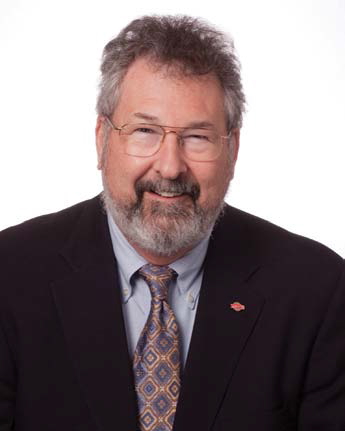Broadcasters Ponder Post-MPEG-2 World

Patrick Waddell, chair of the ATSC Specialist Group on Video and Audio Coding
ALEXANDRIA, VA.—The MPEG-2 compression algorithm is an integral part of the ATSC 1.0 broadcast standard. These are the digital rules that govern today’s HDTV transmissions in the United States and other countries. MPEG-2 makes it possible to fit a 1080i HDTV channel and multiple SDTV service within 6 MHz of bandwidth.
Unfortunately MPEG-2 was defined in 1994, before the widespread emergence of the Internet, wireless broadband, smartphones, tablets, and the other technological advances that define the current digital age. Meanwhile, compression technology has continued to advance with more efficient standards, including H.264/MPEG-4/AVC (Advanced Video Coding, which is intended to be 50 percent more efficient than MPEG- 2), and HEVC (High Efficiency Video Coding; meant to be twice as efficient as H.264, and capable of supporting resolutions up to 8K).
MPEG-4’s more efficient compression has motivated networks like CBS to adopt it in certain circumstances. Specifically, “we are already using MPEG-4 for distribution of our syndicated shows to stations [Pitch Blue] and for backhaul of news stories,” said Robert Siedel, vice president of advanced technology/engineering for the network. “CBS will also be converting the satellite distribution network to the affiliates to MPEG-4 in the next 12 months.”
STANDARD SUCCESSORS
Over the years, the Advanced Television Standards Committee (ATSC) has added more advanced MPEG capabilities to its standard, including A/72, which provides the specifications for real-time transmission of H.264/AVC in an ATSC DTV stream, and A/103, which can be used to transmit non real-time file-based programming compressed using H.264/AVC. These capabilities are part of a suite of standards for transmission known as ATSC 2.0. The ATSC Mobile DTV Standard (A/153), adopted in 2009, utilizes H.264/AVC. ATSC is currently developing the next generation standard known as ATSC 3.0, which will incorporate even more powerful compression technology. These successors to ATSC 1.0 are meant to allow broadcasters to do much more with their bandwidth, including incorporating interactive data capabilities not dreamt of when ATSC 1.0 was formulated in the 1990s.

Mark Richer, ATSC president The problem for U.S. TV broadcasters: When and how to transition to a new system? Money is a constant concern for broadcasters, so they are unlikely want to replace their existing HDTV transmitter plants with equipment geared to MPEG- 4 or newer standards, even if this move would allow them to offer more channels and two-way interactive services.
As well, the earliest legacy consumer HDTV receivers can’t handle anything but MPEG-2, even though “many of the HDTVs in use today are able to decode MPEG-4,” said Patrick Waddell, chair of the ATSC Specialist Group on Video and Audio Coding and manager, standards and regulatory at Harmonic. “So moving to MPEG-4 or better is really a ‘chicken and egg’ issue.
Get the TV Tech Newsletter
The professional video industry's #1 source for news, trends and product and tech information. Sign up below.
“The CEA doesn’t want to alienate people with legacy HDTVs, until there is enough MPEG-4 or newer content on air to justify promoting these receivers,” Waddell continued. “Meanwhile, the broadcasters don’t want to invest in offering MPEG-4 or better until there is a large enough viewing audience to justify the move.”
MOVING ON UP
Mark Richer has been the ATSC’s president since 1995, after working on digital TV broadcast issues on the FCC Advisory Committee on Advanced Television Service. He is a strong advocate for the newer compression standards, and the advantages they offer to broadcasters.
A case in point: “The ATSC Mobile DTV standard uses MPEG-4, making it possible for broadcasters to support mobile HDTV, which is an effective way to reach viewers on the move,” Richer said. “MPEG-4 is also part of the ATSC 2.0 group of standards, which collectively allow broadcasters to get into the two-way and non-realtime delivery segments.”
Don’t forget the compression efficiencies offered by MPEG-4 and more advanced compression algorithms, said HDTV pioneer, tech guru, and multi-Emmy Award-winning SMPTE fellow Mark Schubin. “It is in broadcasters’ interests to change to MPEG-4 at the very least, simply because of the additional bandwidth this compression algorithm frees up compared to MPEG–2,” Schubin said. “With MPEG-4, you can get two HD programs into maybe one 6 MHz slot versus one program using MPEG-2.”
One compromise solution is for broadcasters to offer both MPEG-2 and MPEG-4 services on their allotted spectrum. That way, you could “continue your main services in MPEG-2, and offer more content in MPEG-4 for those people with newer TVs,” said Richer.
In many ways, the “MPEG-2/MPEG-4 and beyond” compression dilemma facing broadcasters today is similar to the analog/ digital dilemma they faced before the digital television transition. As a result, savvy broadcasters may want to take a note from that earlier event to guide their compression upgrades, namely by following Richer’s advice and starting to move forward now, while still keeping their legacy viewers served with MPEG-2.
“At the very least, broadcasters should start using advanced compression systems now to transmit their nonprimary signals,” said Schubin.
James Careless is an award-winning journalist who has written for TV Technology since the 1990s. He has covered HDTV from the days of the six competing HDTV formats that led to the 1993 Grand Alliance, and onwards through ATSC 3.0 and OTT. He also writes for Radio World, along with other publications in aerospace, defense, public safety, streaming media, plus the amusement park industry for something different.

